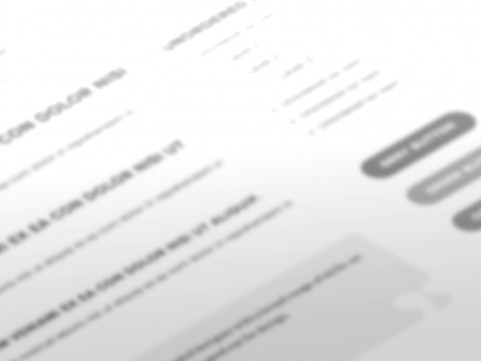Whether you’re into cars or not, you have to admire the build and quality of the Aston Martin One-77. This exclusive car – only 77 ever produced – broke away from conventional automotive production processes. The car didn’t move down a production line as with ordinary cars, instead it was essentially hand-built by a team of experienced craftsmen.
So, what’s that got to do with the creative industry?
You can have the most skilled and talented team in the world but if your design workflow isn’t up to scratch, eventually it will impact on the quality of your work, and by extension, your reputation. If more agencies followed an integrated process rather than a production line approach, clients may see more finesse in the outcome of their projects.
10 years ago, it was very common for all the different departments within an agency to exist in their own little bubbles, with no cross-communication unless absolutely necessary. Even when ostensibly working together as a team on a digital project, rigid workflow processes would isolate each step of the process from the next – the marketing team would do their bit and the project moved down the line to the designers who would create the visuals. The completed visuals would move on to the developers who would build the site before the project was presented to the client for sign-off.
OK, so that’s an oversimplification but you get the idea; each discrete part of the process would be done more or less in isolation with little communication between team members and few reviews to ensure that the project stayed on track.
The problem of course, would come if the circumstances changed over the course of the project or if the client changed the brief – we’ve all been there. With an inflexible process and no ability to adapt to change, the end result would either be an unhappy client with a project that didn’t meet the brief or a lot of extra time and money being spent by the agency putting things right.
I recall a time working as a freelancer, called in to help an agency with a web build. They had commissioned a well-known and extremely talented creative, who had visualised the site to a high degree of finality. The visuals certainly were beautifully stylised, but because of an outdated workflow process, no thought had been put into the usability of the site until it came to the build, and by then it was too late to go back and rework the visuals as required. The result: a compromised build which lacked intuitive functionality. The end user saw a pretty looking site, but didn’t want to test drive it.
Instances like this are thankfully less common now, but there are still agencies out there who see digital as just another channel, or that value speed over quality. As with the conventional automotive production line, each person works only on their part of the process, often in isolation. If everything runs smoothly, completed, uniform cars are churned out at a rate of knots, but if there are problems, the next person down the line might find that their part doesn’t fit, holding up the whole process. Even worse, the completed car might get to the end of the production line and fail quality control – not a huge issue if you are producing hundreds of cars per day but certainly an issue if it’s a digital project that’s been 3 months in the making.
Which brings us back to the One-77, the hand-built car – with all team members working together from start to finish and different parts of the process overlapping to ensure seamless production. It might seem like a more time-consuming way of doing things, but issues can be identified early and adjustments made before they become huge problems. The end result is a high quality product that meets, and no doubt exceeds the customer’s expectations in every way.
Maybe it’s time to push out the production line and rethink the creative process?
Establishing workflow processes that focus on continuous communication between marketing, design and development, assures a higher quality output, happier clients and a better reputation.
I’m not saying there is anything wrong with a Mondeo, but wouldn’t you rather drive an Aston…?
Related reading
Dennis Kardys has documented how his agency WSOL has transformed their workflow to be more flexible and adapt to responsive design, replacing the production line with collaborative workshops, prototypes and style guides. Getting the process signed off both internally and with the client is one of the most interesting points to Dennis’ detailed and informative article.
Viljami Salminen’s Responsive Workflow clearly details his ‘new’ workflow process with some great illustrations. Make sure you read the full article as Viljami has included some valuable resources at the end.
Both articles above were brought to my attention by Rian van der Merwe in An agency workflow for Responsive Web Design. Rian reflects on the importance of content first and mobile first within the process and, once again, there are a tonne of great resources in his article.
A consistent detail with each workflow above; they are still evolving, and with good reason. The way users interact with brands online is evolving at an alarming rate. Mobiles, tablets, laptops, desktops, gaming consoles and televisions are already common devices on which users view digital content. The design process must adapt for us to deliver an effective end product.


